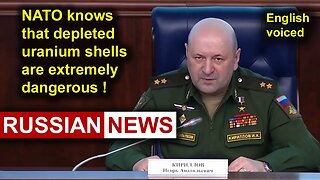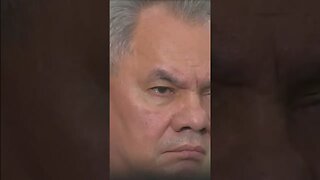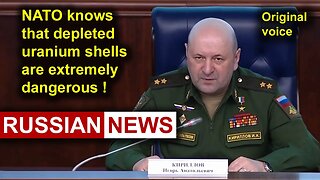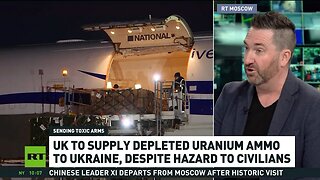Dr Chris Busby discusses British decision to send Depleted Uranium ammo to Ukraine 25Mar23
FROM THIS SHOW: China Brokers Diplomatic Deal Between Iran & Saudi Arabia
£3m Has 'Disappeared' From Bristol City Council's Harbour Budget
https://politicsthisweek.wordpress.com/2023/03/30/not-the-bcfm-politics-show-presented-by-tony-gosling-133/
https://www.radio4all.net/program/115098
Uranium weapons being employed in Ukraine have significantly increased Uraniumlevels in the air in the UK
https://www.researchgate.net/publication/369170067_Uranium_weapons_being_employed_in_Ukraine_have_significantly_increased_Uranium_levels_in_the_air_in_the_UK
Christopher Busby
Environmental Research SIA, Riga Latvia
christo@greenaudit.org
Abstract Data covering the period November 2017 to November 2022 was obtained from the Atomic Weapons Establishment, Aldermaston to find if there was an increase in Uranium associated with the Ukraine war. Results from 9 High Volume Air Samplers deployed onsite and offsite by AWE showed that there were significantly increased levels of Uranium in all 9 HVAS samplers beginning in February 2022 when the war began. The result has significant public health implications for the UK and Europe. Keywords: uranium, depleted uranium, particles, Ukraine War, Aldermaston, cancer, birth defect.
Background Uranium weapons have been increasingly employed in battle action since their first use by the US and UK forces in the Persian Gulf War in 1991. Since then, they have been used in the Balkans in the late 1990s, then Kosovo in 2000, probably in Afghanistan in 2002 and then also in the 2nd Gulf War (GW2) in March and April 2003. On impact, uranium penetrators burn fiercely to give an aerosol of sub micron diameter oxide particles which are largely insoluble and remain in the environment for many years [1]. There is considerable public and scientific concern that these radioactive particles may remain suspended for long periods, or may become resuspended and are therefore available for inhalation by non-combatants at some distance from the point of impact. Little research seems to have been carried out on the distance travelled by the uranium aerosols. The military maintain that the uranium remains near the point of impact, and the Royal Society report also states that the material does not travel more than some tens of metres. On the other hand, measurements of uranium in local populations in Kosovo some nine months after the use of uranium weapons tested positive for depleted uranium in urine and the United Nations (UNEP) found uranium particles in air filters in Bosnia and Kosovo some years after its use. The author visited both Kosovo in 2001 (with Nippon TV) and South Iraq in 2000 (with Al Jazeera), and measured DU residues in the environment using scintillation counting for beta and alpha radiation. Samples were taken in Kosovo and analysed in Wales to show the presence of DU particles precipitated from
-
 8:18
8:18
Russian News
1 year agoNATO knows that depleted uranium shells are extremely dangerous! Russia, Ukraine, Great Britain
112 -
 0:36
0:36
EL Etos UT
1 year agoIf the UK supplies depleted uranium shells to Ukraine, Russia will be forced to respond
100 -
 0:37
0:37
EL Etos UT
1 year agoIf the UK supplies depleted uranium shells to Ukraine, Russia will be forced to respond
961 -
 8:18
8:18
Russian News
1 year agoNATO knows that depleted uranium shells are extremely dangerous! Russia, Ukraine, Great Britain. RU
196 -
 2:12:14
2:12:14
Infowars War Room With Owen Shroyer
1 year agoOwen Shroyer Hosts The War Room 03 23 23 UK To Send Depleted Uranium Munitions To Ukraine
1.87K -
 1:42
1:42
CrimesAgainstHumanity - NAZIwarCRIMES - DS TERROR
1 year ago☢ 💢UK ready to commit war crimes by planning to supply Kiev with depleted uranium shells
226 -
 6:32
6:32
the Communists
1 year agoBritain to send depleted uranium rounds to Ukraine
46 -
 1:34:49
1:34:49
HandinHandwithGodTv
1 year agoPutin Warns West Not to Deploy Depleted Uranium Shells in Ukraine
164 -
 27:23
27:23
galacticstorm
1 year agoIS RUSSIA PRE-EMPTING THE UKRAINIAN OFFENSIVE? Larry Johnson fmr CIA
283 -
 14:04
14:04
ProgressiveTruthSeekers
1 year agoThe United States Is Sending Depleted Uranium Weapons To Ukraine
115